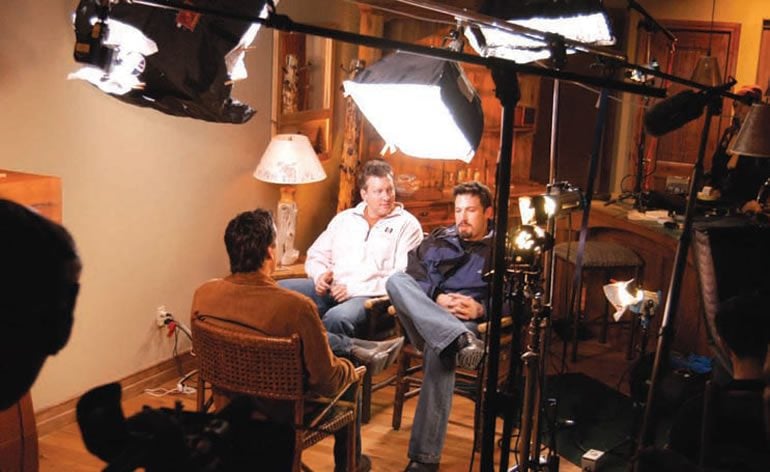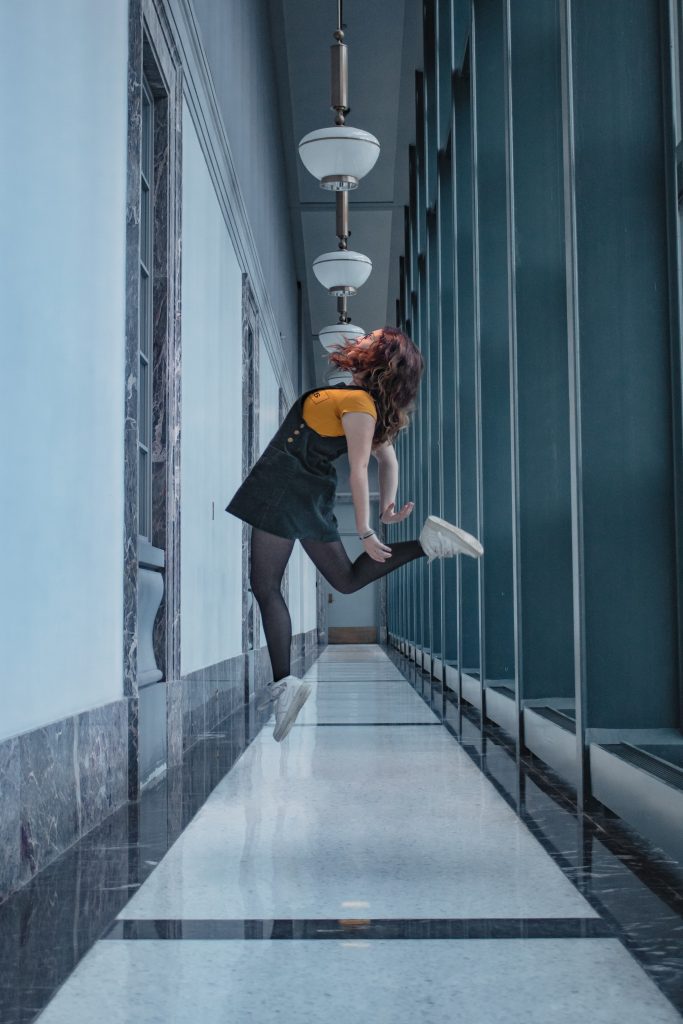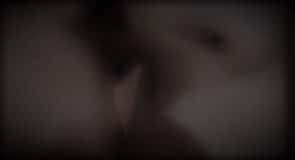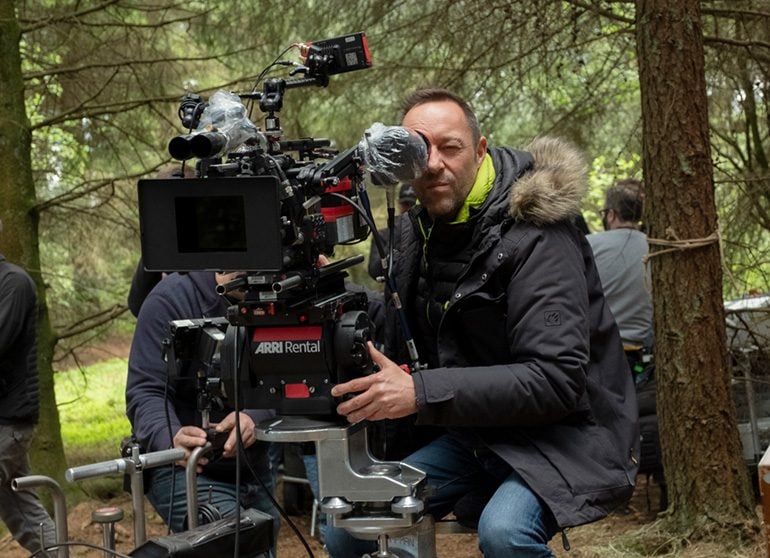Reference: StudentFilmmakers Magazine, August 2007. Lighting Interviews: Let’s Get Out of Focus: Creating a Short Depth of Field by Carl Filoreto. Pages 20 & 21.
Lighting interviews and head shots are a critical part of my business. The goal, to make the person under the lights look as good as possible under the circumstances, is the same for a complex multi-camera interview for Dateline NBC, as it is for a corporate talking head reading off a prompter for a trade show video. And, I need to emphasize that the object is to make the “talking head” look good, and not to dazzle everyone with your brilliance in lighting a background. The background at best should enhance the look of the subject. At worst, it shouldn’t be a distraction.
Now I do say, ‘under the circumstances,’ because I often find that I have little control over the interview location. Sure, some major interviews with a large budget build in time for a site survey. Or maybe I’ll be able to use a hotel suite I know has the right mix of elements to create a setting, or more likely, multiple settings, for a successful interview.
More than likely though, I’ll get the address of a location, and I won’t see it until the day of the shoot. I’ll be walking around with the producer asking me, “What do you think of this?” Which is quickly followed by, “…And can we be ready to go in about forty-five minutes?” Then it’s a case of making the best of the situation.
Once in a while, I’ll walk into a setting and think, “Wow, this is a home run.” But more often, I’ll tour an office building trying to determine which drab conference room with a table the size of
Rhode Island, or which office with floor to ceiling windows, will present the fewest production problems.
So, what am I looking for to make my life easier in an interview location?
There are many considerations, but one of the primary things I’m looking for is depth. A deep room can cure a lot of ills, especially if the setting doesn’t have a lot of interesting items in it which can be crafted into a pleasing background. Depth makes it easier to handle two major production components of lighting a talking head:
Controlling light and creating a short depth of field.
Usually, in an interview situation, I want to control light as much as possible. My goal is to shoot the interview with an f-stop ranging between f1.7 and f2.8. That’ll make it easier to accomplish my second goal: creating a shallow depth of field.
From the outset, I should point out that I’m in the practice of lighting interviews with daylight balanced instruments. To me, it’s easier to create pleasing warm tones with a daylight balanced source of light. And it allows me to use tungsten instruments in the background to further warm up the frame. So unless the narrative calls for a specific look, I’ve found that producers almost universally like warm tones for an interview.
My lighting packages are designed to control light as much as possible. I still usually use a 400 watt HMI instrument and cover it with a light box. I’ve tried using fluorescent based instruments to accomplish my goals, but I find that they just ooze light all over the room. There are different brands of light boxes, but I prefer to use one that allows me to attach what’s known as an egg crate grid to the front of it. The grids, which are available in many different flavors, reduce the amount of light coming through the light box. I prefer soft flexible grids which are easy to store and don’t take up a lot of space in my kit.
I often find that even with an egg crate grid, I still get too much light spilling from the light source. In this case, I will attach a pre-cut piece of light grid cloth to the frame of the light box, providing me with another layer of diffusion. The light grid cloth knocks down the light by probably a half stop, and softens it in the process. That’s of paramount importance when lighting faces. Since I have a fond spot in my work day for grid cloth I buy it by the roll. But it can also be purchased by the piece.
I incorporate the theory of three-point lighting into my setups, but I do make adjustments. Basically, I try to position the key light so that it will create some modeling on the interviewee’s face. I further control the degree of modeling with my good buddy, the light grid cloth. I’ll take a roll of grid cloth, mount it on a long arm, and set it next to the subject’s chair. This way I can bounce the key light back onto the subject.
If I have the time, I’ll take a small instrument, something in the 150 watt range, put it on a dimmer, and place it so that it will push light through the roll of grid cloth. And voila, I have a controllable fill light, and I can easily dial in the amount of modeling I need. If the fill light is judged to be a bit warm, I’ll place a piece of ½ color temperature blue gel in front of it.
Finally, I’ll place a back light, and my choice of that instrument really depends on a number of factors including the amount of light floating around the room, the subject matter of the interview, and the look of the person being interviewed.
At this point I’ve dialed down the amount of light in the room, achieved the correct light level to expose the interview subject perfectly, and reduced my f-stop to a point where I can push the background out of focus. And I’ve kept most of the light from spilling into the background, allowing me to craft a look suitable to the interview.
In this setting, there’s another way to create a shallow depth of field. It involves the simple relationship between the places where you decide to plant the camera, where you position the subject’s chair, and the background. I don’t want to try to reinvent Euclidean laws of geometry, but there are some simple relationships here that you need to ponder when you set up your interview.
First, the closer the subject is to the background, the harder it will be to throw the background out of focus, and the more difficult it will be to keep the light from your key to spill onto the background. So I always try to create some space between the subject and the background. The distance between the camera and the subject will determine how much of the background will be visible in the shot, and how much compression in the shot can be achieved.
Finally, if the room is giving you fits, and there’s a bunch of light seeping in through a skylight that’s out of your control, then you have one more solution in the tool belt. And that’s to put a solid ND (neutral density) filter in your matte box. A .3ND will knock down one f-stop, and a .6ND will reduce things by two f-stops. I usually use some sort of soft filter, and yes, even one that produces some additional warmth as well. These filters, in addition to creating some type of modest effect, will usually cut the light level by about a half a stop too.
These rules also apply to times when you’re working with people ranging from hosts of a documentary or cable program, to a correspondent doing a live shot in front of an established background. Of course, there are those occasions when you throw out the rules. About a year ago, I was hired to shoot a series of interviews designed specifically for viewing on YouTube, and my marching orders were to not make them ‘look too good’. That’s a challenge in itself. Most of the time, though, you’ll want to control a number of factors in the room in order to shoot compelling interviews that are pleasing to the eye.
Photos by Carl Filoreto. (Not to be re-used for commercial purposes without permission.)
Carl Filoreto is an award-winning DP, and his company is Elk Run Productions, Inc. (www.elkruntv.com), which has a roster of clients that spans corporations, production houses, crewing agencies, and broadcast and cable networks, including Dateline NBC, The Food Network, and The Travel Channel. Prior to starting his business, Carl won seven regional Emmy awards, numerous national and regional National Press Photographers awards, and multiple awards from Colorado Ski Country and the National Snowsports Journalists Association while working at KMGH-TV in Denver, WTNH in New Haven and WGGB in Springfield, Massachusetts.





